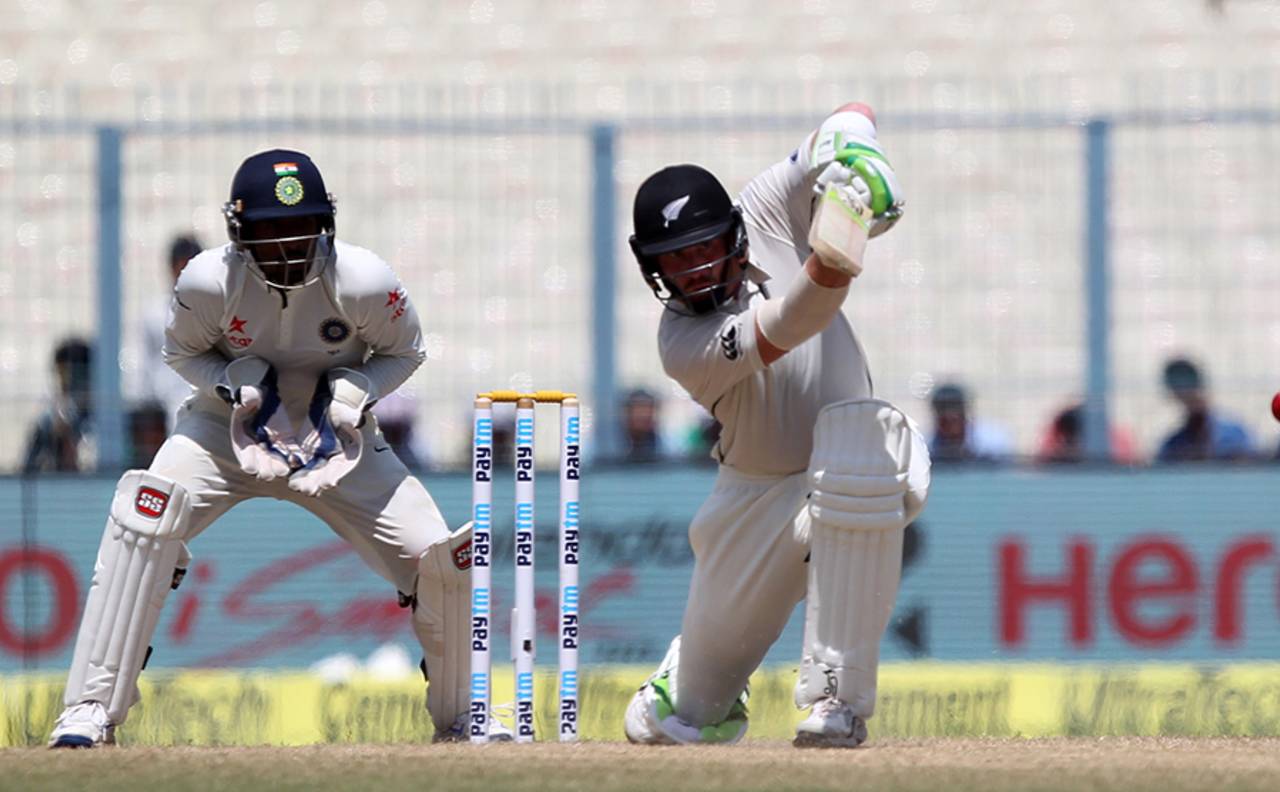Guptill in Kanpur, Guptill in Kolkata
Umesh Yadav trapped Martin Guptill in front in the first innings of the first Test. His head fell over, which resulted in the front leg falling across and therefore the bat coming down at an angle. Guptill's feet movement against pace at Eden Gardens is a good example of how batsmen work hard on addressing their areas of concern. In this innings, he kept the head a little straighter, which in turn meant that the front foot fell a lot straighter. It isn't easy to make technical adjustments in the middle of a series but you must keep striving for improvement.
Modern-day batting v modern-day leadership
In the second innings of the first Test, Guptill got out to R Ashwin playing a slog-sweep without even opening the account. In this Test, Ashwin placed a long-on, a deep midwicket and a long leg from the very first ball to Guptill. The field stays the same for a few overs before lunch despite the batsman not attempting a single attacking shot in that direction. In the years gone by, Guptill's form and runs in the bank would have dictated a more attacking field but modern-day leadership is, perhaps, tuned to the mindset of a modern batsman. The idea is to cut off the boundary shots, for that apparently is likely to make the modern-day batsman more uneasy than more fielders closer to the bat in catching positions.
Bat in front v bat on the side
In Kanpur, Ashwin accounted for Tom Latham in both the innings. On both occasions, he was adjudged leg before to balls that went straight after pitching. While Latham should not be blamed for playing for spin (it was a turning pitch in Kanpur), he was guilty of putting the bat besides the pad and not in front. The basics of playing spin is to keep the bat ahead of the front pad to ensure that not only you prevent the ball from hitting the pads but also makes sure that bat-pad doesn't go to the close-in fielders.
Ravindra Jadeja operated over the stumps to both left-handed batsmen - Latham and Henry Nicholls for a long time. Both batsmen settled into a nice rhythm of defending-sweeping the balls pitching outside off. The moment Jadeja went round the stumps, he got a wicket. The angle forced Nicholls to open up the stance a little and also abandon the sweep somewhat, for the balls were pitching and finishing within the stumps a lot more. The change of angle forced the change in tactics and produced a wicket.
Breaks break partnerships
The fifth ball after lunch and the ninth ball after tea produced wickets. While Guptill was trapped lbw by Ashwin after the first break, it was the well-set Latham who edged one behind after the tea break, again off Ashwin. The best part about Test cricket is the breaks at various stages of the game. These breaks not only give players a break from the heat but also a chance for the teams to change momentum. On pitches like the one we saw at Eden Gardens, the importance of breaks can never be overstated. It's fairly tough to get set on a pitch where you can't trust the bounce and once set, you don't want the momentum to break but these compulsory breaks can't be avoided.

